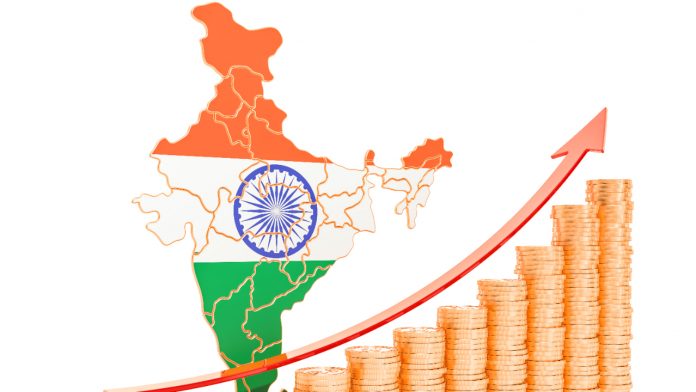Indian Economy: In 2020, as a result of measures taken to battle Covid, poor growth, and high-interest rates, India’s state debt hit an all-time high. Some claimed that a high debt load is not particularly concerning in an era of low-interest rates. However, there is also proof that the economy is negatively impacted by excessive levels of government debt. When we examine India’s state debt and fiscal deficit against this backdrop, some issues come up. For instance, what is the price of India’s high amount of debt?
Do you perceive a golden image? What will take place after that? We examine the macroeconomic effects on India and other nations before, during, and after the time of debt “growth, stabilization, and reduction” and aim to learn from previous growth and reduction experiences as well as from other policy alternatives and post-pandemic recovery. What story does it tell? India’s COvid-induced debt was not only more than in the past, but was also higher than the average debt of an emerging market nation. There were several causes for the debt’s growth as well.
Despite India’s high inflation playing a significant part in decreasing debt, both the increase in government spending and the reduction in growth played a proportionately larger impact than the average emerging country. There is some hope for India despite the substantial public debt. As a result, only a minor portion of the sovereign debt is held by foreigners. Again, while there have been instances of defaults as a result of an increase in debt throughout the world, none have occurred in India thus far. Additionally, India’s long-term real rates are still lower than the average for emerging economies.
About 30% of the total revenue during Covid was lost to resource abandonment as a result of excessively high-interest rates, which was three times more in India than in the rest of the rising economies. The resources available for countercyclical fiscal policies, where India’s public spending is significantly lower than its peers, are reduced by higher interest payments, together with social expenditures in crucial areas like health and education in the face of adverse shocks like COVID.
Our analysis demonstrates that business cycle volatility verifies a portion of the debt difference relative to peers in India, proving the countercyclical fiscal policy’s constraints due to the higher debt. Simple math demonstrates that cutting India’s interest payments to emerging economies by 10% on average would free up between Rs 60 and Rs 80 trillion, which is about three times as much as India’s pre-Covid general government education spending and over half of its health spending.
The effect on borrowing costs of India’s enormous state debt is another factor. The cost of borrowing is higher in India than it is in average emerging economies, despite the fact that real rates there are low and on pace with those of the average emerging country. For instance, whereas the average emerging country only experiences a 0.01 percentage point increase, India sees a 0.19 percentage point increase in long-term borrowing rates for every one percentage point increase in credit to GDP.
According to estimates from public debt rating organizations, India’s debt and deficit are significantly larger than those of comparable economies. India’s public debt has increased nine times, dropped five times, and remained unchanged six times since 1913. While 75% of loan expansion in the average emerging country results in cuts, credit growth often stabilizes in India. In other words, India can handle a significant amount of debt without ever defaulting. Additionally, we discovered that debt reductions outperform debt growth in terms of macroeconomic results.
Examining interest costs and extra-budgetary funds that may result from low state borrowing is one technique to determine how much debt India can cut. As a result, the debt ratio would need to be decreased to 70% in order to accomplish interest payments of up to 22% (far higher than the average for emerging economies of 10% currently). How long will it take to get there and what would be its likely route? Fiscal adjustment is less necessary the faster growth is and the cheaper borrowing costs are.
According to the show-off exercise, the debt ratio will reach 70% over the next 10 years if real GDP growth remains constant at 7% and the real rate is set at 2%. These assumptions are in line with the World Economic Outlook of the International Monetary Fund. The general government’s primary and fiscal deficits would need to be decreased by 1.7 percent and 5.9 percent of GDP, respectively, each year to be lowered (and 22 percent of interest payment receipts).
When compared to the primary and fiscal deficit predictions of 4.5 percent and 9.9 percent, respectively, for FY 2022–23, the WEO says that this would call for a significant adjustment. Importantly, the less adjustment is required the greater the growth rate and lower the interest rate. For instance, a growth rate of 9% or a real rate of 0% would allow for a primary deficit of more than 3% of GDP instead of 1.7%, but would still result in the same credit constraint. In fact, research from emerging countries indicates that primary balance consolidation can be effective in decreasing debt outside of recessions and is not harmful to growth. (Nikhil Patel and Prachi Mishra are connected to the IMF in Washington, DC.)
|
|
 YouTube YouTube |
Click Here |
 Facebook Page Facebook Page |
Click Here |
 Instagram Instagram |
Click Here |
 Telegram Channel Telegram Channel |
Click Here |
 Google News Google News |
Click Here |
 Twitter Twitter |
Click Here |




